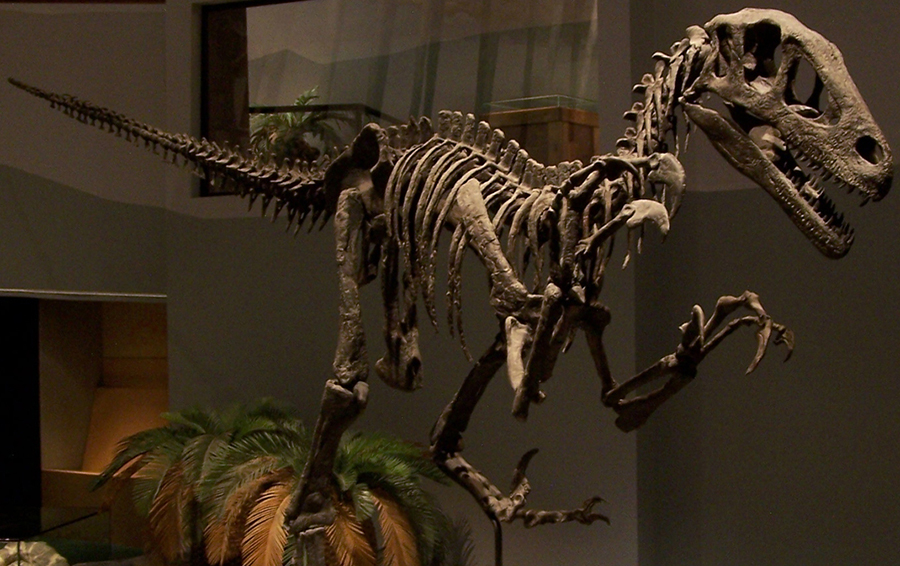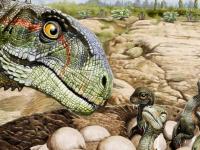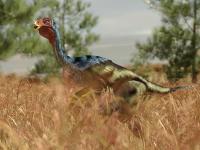Utahraptor: A State Mascot?

The Senate approved a proposition to christen Utahraptor as the Utah State Dinosaur. but it was decided to be a recognized insignia of the state instead.
The marquee fossil of the state and the largest Dromaeosaur (popularly known as raptor) known to date, Utahraptor, a genus of its own, was discovered in 1975 by Jim Jensen in the Dalton Wells Quarry in east central Utah near the town of Moab. However, this discovery remained incipient and largely unattended to, and it was only following a discovery of a large foot claw in late 1991 when large-scale excavations were undertaken by the eminent paleontologist James Kirkland in the Gaston Quarry in Grand County, in the reputedly fossil-rich Cedar Mountain Formation. It’s widely speculated that, this ton-hefty behemoth — similar to its sibling and cousin species, being the predecessor of birds — had body (axillary) feathers, though any substantial proof is yet to be unearthed.
The formal type specimen, CEU 184v.86, is currently housed at the College of Eastern Utah Prehistoric Museum while Brigham Young University, the repository to Jensen’s excavations, possesses the largest collection of Utahraptor fossilised remains and finds.
Formally consecrated as Utahraptor ostrommaysorum, honoring Dr. John Ostrom of Yale University for his pioneering research linking carnivorous dinosaurs to the ancestry of birds, it was originally to be christened Utahraptor spielbergi to honor a prospective donation courted of “Jurassic Park” director Steven Spielberg, which could never come to fruition due to inconclusive negotiation.
Kirkland postulated that Utahraptors attempted to take advantage of vulnerable prey trapped in quagmires and bogs or scavenge upon the carrion thereof, themselves becoming mired in the quicksand, resulting in the fossilized carnal remains in the form of the predator traps he observed in 2001 in sandstone boulders in eastern Utah, and later in Cleveland-Lloyd Quarry and the La Brea tar pits of California. The Utahraptor’s find flung open gates to new avenues of palao-anatomic inquiry by serving to debunk the preconceived notion that sickle-clawed raptors were sleek, supple, diminutive creatures. This special specimen compelled them not only to reconsider their hypothesis but to overhaul it altogether.
Being the oldest and largest member of its family, the tantalizingly bulky yet agile beast’s large, retractable sickle claw-toe, the salient characteristic of the family, itself measured 10 inches and served to rip apart the hide and expose the innards and entrails of its prey.
In testimony to the enigmatic beast’s modern cultural significance, the Senate approved a proposition to christen Utahraptor as the Utah State Dinosaur. However, Utahraptor would have replaced another dinosaur, the Allosaurus, as the state’s official fossil, so it was decided that Utahraptor would be another recognized insignia of the state.
Fresh investigations continue to be opened every once a while and unveil novel insights into its elusive physiology. Being the forerunner of birds, the tantalizing bulk of this titan poses an elusive dilemma and inspires awe for evolutionary biologists.
Follow us: @paleontologyworld on Instagram | Paleontology World on Facebook
Source: http://suindependent.com








